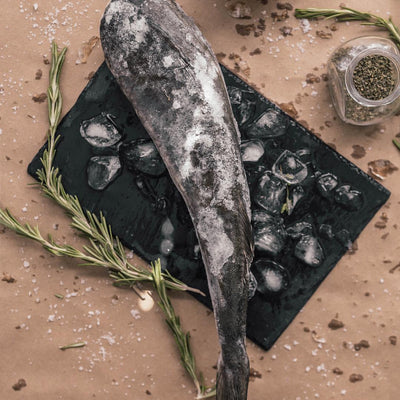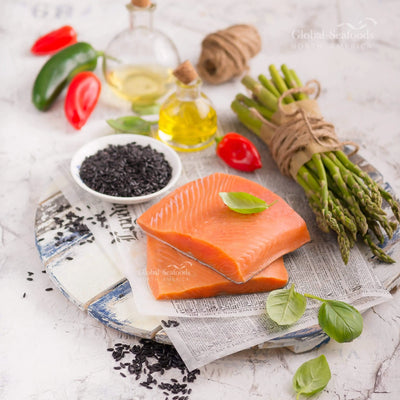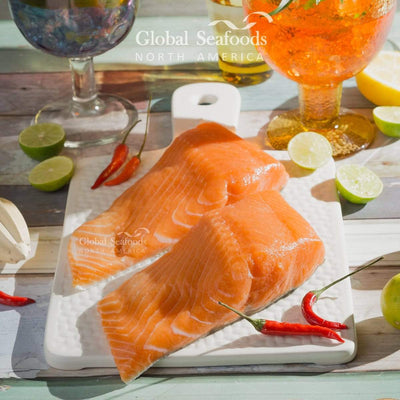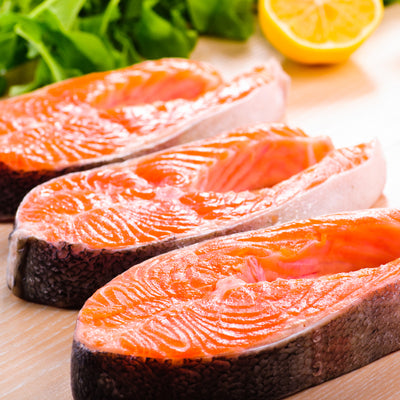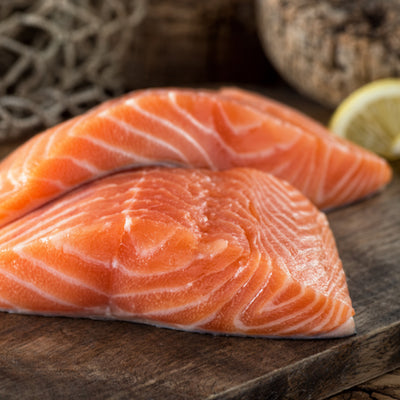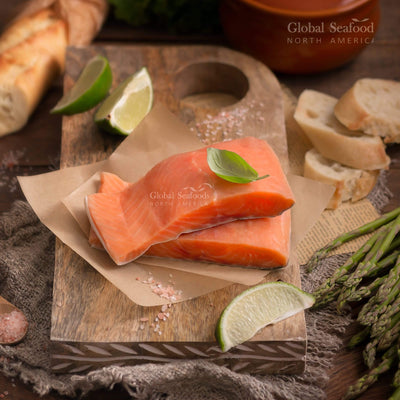Best Fish for Someone Who Doesn't Like Fish

Seafood can be an acquired taste for someone who has never eaten fish
The flavor and texture of fish can be off-putting for beginner seafood eaters. Unless you grew up eating seafood, chances are you need to introduce yourself to eating seafood slowly. As a seafood company, we know that the health benefits of seafood. We don't want anyone to miss out on the benefits and delicious meals you can get out of eating fish. For that reason, we are providing you with a guide to the best fish for people who don't like fish.
We are going to introduce you to popular fish to eat and how to remove the fishy taste from fish.
If you're not a seafood eater, we encourage you to use our suggestions and place an order today and be on your way to enjoying the many wonderful benefits of incorporating seafood into your diet.
Why Eat Seafood?
According to the Food and Drug Administration, Adults should eat at least two 4-oz portions of seafood per week, and children should eat at least two 2-oz portions of seafood per week. Fish is a nutrient-dense food that is high in protein and other essential vitamins and minerals. The DHA and Omega 3 fatty acids present in seafood is ideal for supporting children's growing brains. Those seafood recommendations should come from a variety of seafood types.
Not only is seafood incredibly healthy for us, but seafood is delicious too! We want to help you learn the best fish for someone who doesn't like fish so that we can convert you into seafood lovers!
| [SWORDFISH] |
But I hate Fish!
Long gone are the days of dry fish sticks and bland tuna fish sandwiches. Seafood culture around the globe has contributed to an incredible amount of surprising ways to cook seafood. From fish tacos and warm fish stews to grilled swordfish steaks and orange glazed salmon, we will help you find a way to learn how to book fish, so it doesn't taste fishy.
| [TUNA] |
Best Tasting Fish for Beginners:
The least fishy fish for beginners is going to be a mild white fish. There are several varieties of mild white fish that you can cook in a variety of ways. Mild white fish tastes slightly sweet with almost no Umami flavor. Umami is that name for the savory, salty, and briny flavor that you get sometimes get from eating seafood. Umami flavors are quite delicious once you get used to them.
| [COD] |
Not all white fish are delicate in flavor and texture, but we will walk you through the list of mild white fish that are perfect for introducing yourself to eating fish.
- Cod (Pacific Cod): Cod Fish tastes mild and slightly sweet with a delicate flakey texture. Cod is a great first fish because it can be flavored with a variety of flavor combinations from citrus to blackened seasonings. Cod can be baked, broiled, sautéed, or steamed. "Does cod taste fishy?" The answer to that question is a resounding, no. If your cod fish tastes fishy, that only means it isn't fresh. Freshly caught, or newly frozen cod should have no unfavorable tastes or smells.
- Flounder: Flounder is another excellent beginner fish. Flounder has a very delicate texture and a mild, slightly sweet flounder flavor. Because of its delicate texture, flounder fillets are a little more challenging to cook for a beginner. While delicious pan-seared, flounder fillets can fall apart on you during the cooking process if you're not gentle with the fish. Like cod, flounder tastes slightly sweet but takes on a variety of flavors. A favorite for flounder is piccata with lemon and capers over pasta. In a head to head competition of cod vs. flounder, cod takes the slight advantage because it's easier to learn how to cook cod fillets than flounder fillets.
-
[DOVER_SOLE] - Alaskan Halibut: Alaskan Halibut is another fish with a mild flavor. The difference between halibut and other white fish is the larger flakes. When you cook seafood, the meat naturally separates into flakes. Halibut is a little bit thicker than cod and is a slightly firm white fish. Firmer textured fish might be more pleasing to new seafood eaters who prefer the firmer texture of other meats such as chicken, pork, or beef. Halibut tastes slightly sweet like other white fish. Halibut might have a slightly more robust flavor than cod or flounder, but its firmer texture makes it a great candidate for a first-time fish eater.
-
[HALIBUT_FILL] - Lingcod: The name, lingcod, is misleading as lingcod is not a part of the cod family at all. Lingcod is another lean white fish with a slightly firm texture and a mild taste. When we say mild taste, we mean that the flavor is almost undetectable. You're more inclined to taste the seasonings and flavor additives you cook with than the flavor characters of the meat itself. When bought raw, lingcod has a shiny blue/green sheen to it when fresh. Don't let this throw you off. Lingcod cooks up to a beautiful opaque white with a flaky texture.
-
[LING] - Mahi Mahi: With its exciting name and global popularity, many first-time seafood eaters find themselves asking, "What does mahi mahi taste like?" Mahi Mahi is one of the tastiest types of fish. As one of the most popular types of seafood worldwide, mahi mahi tastes sweet with a medium-firm texture. Mahi mahi is a slightly thicker fillet which makes it suitable for a variety of cooking methods. Mahi Mahi is one of the best types of white fish for grilling. Mahi Mahi pairs perfectly with the flavors of both soy or citrus marinades. Marinating seafood is a popular way of masking the "fishy" flavors of seafood.
-
[MAHI_MAHI] - Swordfish: You might be surprised to find swordfish on this list of non-fishy fish. If you find yourself wondering, "What does swordfish taste like," you might be surprised to find out that swordfish is an excellent beginner fish. Not only does swordfish have a mild flavor and pairs well with all sorts of seasonings and marinades, but swordfish is also one of the strongest fish in the ocean, which gives swordfish fillets a firm texture. Swordfish is sometimes even compared to a tender cut of steak in terms of texture. Swordfish is excellent for those who aren't accustomed to the flakey and delicate texture of other white fish. Despite its firm texture, swordfish tastes just as mild as the other varieties of white fish we've discussed so far.
-
[SWORDFISH_FRESH] - Alaskan Pollock: Despite having a slightly higher oil content than other types of white fish, Alaskan pollock still has a mild flavor. The stronger flavor characteristics in fish tend to come with fish higher in oils. Fish that come from colder waters have higher fat content to stay warm in their natural habitat. Pollock has large flakes and a slightly firmer texture than cod.
- Rockfish: If you're looking for a delicious white fish with slightly more flavor than other varieties we have discussed, rougheye rockfish might be your answer. Rockfish has a mild yet somewhat nutty flavor that complements a variety of marinades and flavor combinations.
-
[ROCKFISH]
The trick to white fish is buying it fresh or flash frozen. Freshness guarantees the best flavor. Fish fillets tend to get "fishy" as they get older and less fresh. The get the best texture from your white fish, you want to be sure not to overcook it. Overcooking white fish causes it to dry out, which makes it less appealing to eat. You want to cook fish until it starts to flake and is slightly opaque in the center.
How to Cook Fish for Beginners:
One of the easiest ways to cook seafood as a beginner seafood eater is in the oven. Baking seafood in tinfoil or parchment paper pouches creates an easy, healthy meal with little to no mess or clean up.
Grilling fish can be finicky if you want your fish cooked directly on the grill. Flipping grilled fish fillets takes some finesse. Creating a tinfoil pan and spraying it with cooking spray is one of the easiest ways to get a fresh grilled taste without the hassle of grilling.
How to Get the Fishy Taste Out of Fish?
All of the seafood above should have almost no fishy taste or smell. Making sure that you buy very fresh or frozen seafood can help guarantee the freshest taste possible. Very fresh fish or flash-frozen will be fish that doesn't taste fishy.
For those of you who still want to avoid any umami flavor initially, citrus is a great way to start out eating seafood. Lemon and lemon juice compliments just about any seafood meal. Marinade your fish in lemon and serve your whitefish with wedges of fresh lemon for a bright and clean flavor. Even the most seasoned of fish lovers still love lemon sprinkled on their fish.
What about Salmon?
Salmon is one of the healthiest kinds of seafood available. With its high omega-3 fatty acid content, salmon can help you maintain your heart health, among other health benefits. Salmon is high and protein and frankly, delicious. With its higher oil content, salmon does tend to have a stronger flavor. While we wouldn't categorize that flavor as "fishy," new seafood eaters may want to know how to remove the fishy taste from salmon.
How to Cook Salmon So It Doesn't Taste Fishy:
A simple and easy salmon recipe for fish haters incorporates orange slices and white onion cooked in a tinfoil pouch to create a delicious and tasty salmon fillet. Simply slice an orange into round slices. Squeeze the orange juice over your salmon fillets. Season your salmon with salt and pepper. Thinly slice your white onion and lay on top of your salmon fillets. Cover your salmon and onion with three or four orange slices and wrap it up in tinfoil. Bake in the oven at 350 degrees Fahrenheit for 10-12 minutes or until the salmon is slightly opaque inside.
Orange juice and orange slices complement the taste and texture of salmon. The citrus in the orange helps to cut the "fishy" flavor of the most robustly flavored fish, including Coho salmon or black cod.
Learning How to Eat Seafood:
If you're new to seafood, but you want to enjoy the health benefits of adding seafood to your weekly meal plans, start with some of our suggested white fish varieties. We promise you'll be quickly branching out to enjoying more and more types of seafood.
Also in News

How to Make Sea Bream Sushi With Dry-Aged Tuna & Crab Roll — Step-by-Step With Chef Joshua
A complete guide to making Sea Bream sushi at home, including filleting, curing, slicing, and building a Dry-Aged Tuna & Crab sushi roll. Chef Joshua shares professional tips for restaurant-quality results.

The Boiled Crab in Popular Culture: From Cajun Cuisine to Trendsetting Restaurant Phenomenon
From spicy Cajun-inspired seafood boils to hands-on dining experiences, The Boiled Crab has left a unique mark on popular culture. Discover its cultural roots and culinary influence.

Boiled Crab for Game Night: Everything You Need for a Perfect Seafood Party
Take your game night to the next level with a Boiled crab party. Learn the best recipes, cooking tips, and hosting hacks for a memorable seafood feast.

